Photos: Prehistoric Dog Graveyard Discovered in Siberia
Man's best friend
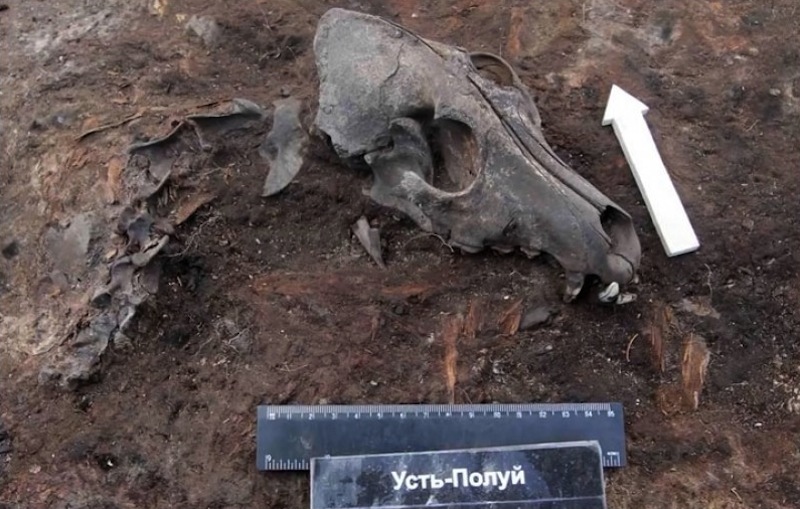
Archaeologists have discovered a prehistoric dog graveyard at a 2,000-year-old village near the Arctic Circle in Russia's Siberia.
Excavations at the archaeological site of Ust-Polui, in the Russian city of Salekhard, have found the remains of more than 115 dogs scattered around the prehistoric village.
The researchers also found the entire skeletons of five dogs that had been carefully buried in shallow pits, similar to the method used for the three ancient human burials found at the site. [Read full story about the prehistoric dog graveyard]
Religious sacrifices?
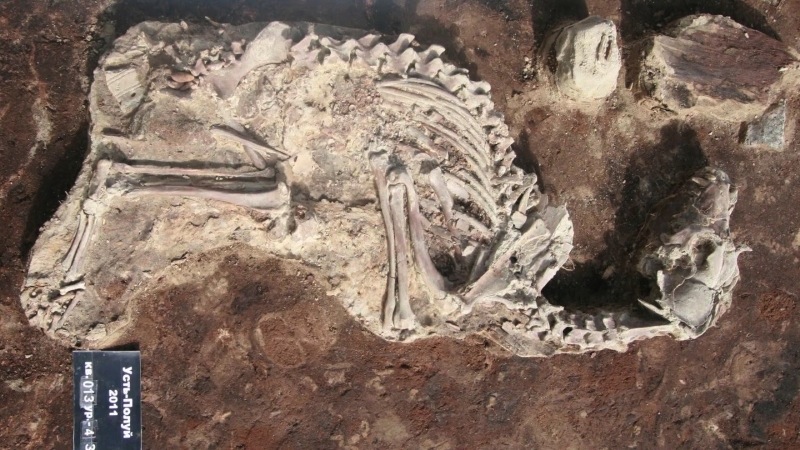
Robert Losey, an archaeologist at the University of Alberta who is studying the dog burials at Ust-Polui, found signs that dogs helped the villagers hunt and herd animals, and may have pulled sleds.
The remains of many dogs from Ust-Polui also show they were butchered and probably eaten — and some may have been killed for religious sacrifices. But the five dogs that were carefully buried show no signs of having being butchered for food or deliberately killed, Losey said.
Canine bond
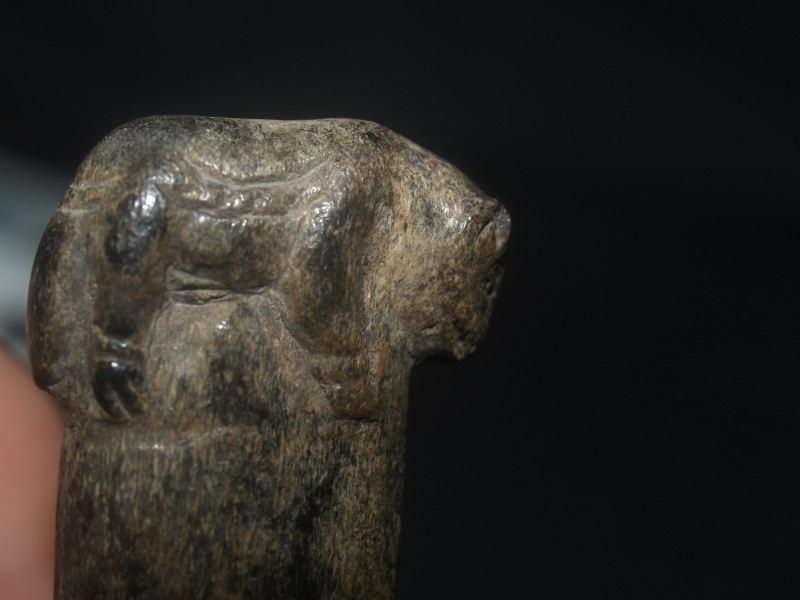
Losey started studying the dog burials at Ust-Polui about three years ago, as part of his research into the relationships between people and dogs in the world's northern regions. He said the dog burials show that some people and some dogs in the ancient village had developed close bonds.
This carved ivory knife handle from Ust-Polui, discovered in the 1930s, is thought to show a dog wearing a sled harness.
Snow dogs

The dogs of the village of Ust-Polui around 2,000 years ago would have looked similar to modern Siberian huskies in terms of the shape of their skulls and bodies, Losey said, with mainly black and white fur.
But, they were smaller than modern huskies. Most weighed less than 48 pounds (22 kilograms) and stood less than 20 inches (50 centimeters) tall at the shoulder. A typical Siberian husky today weighs up to 60 pounds (27 kg) and stands up to 24 inches (60 cm) tall at the shoulder.
Ancient burials

Losey has also studied ancient dog burials at archaeological sites near Siberia's Lake Baikal that have been dated to around 8,000 years ago. In contrast with many of the dogs found at Ust-Polui, there are no signs that the Lake Baikal dogs were killed or eaten.
Some of the Lake Baikal dogs were buried with decorated collars and grave goods, such as jars and spoons.
Historic settlement
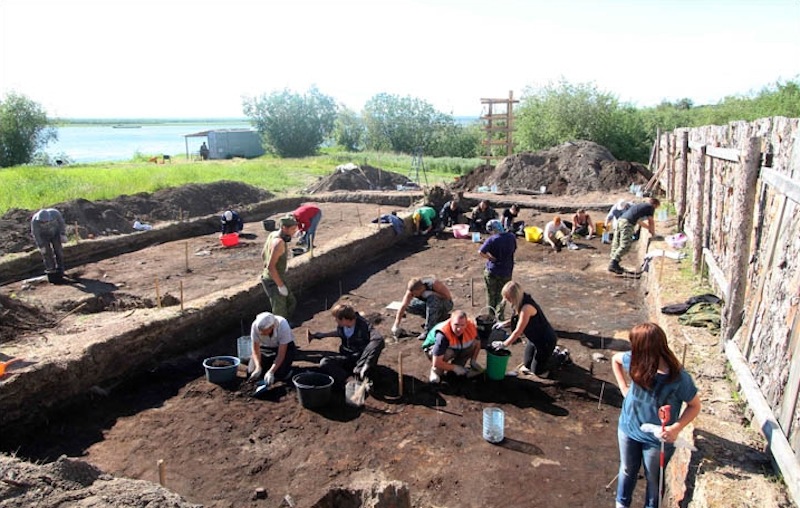
The Ust-Polui archaeological site was discovered in the 1930s during construction work in the Russian city of Salekhard, located in the Arctic Circle, about 1,500 miles (2,400 kilometers) northeast of Moscow.
Archaeologists think the site was one of several Bronze Age settlements around the lower Ob River in the 1st century B.C. Part of the village appears to have been used to sacrifice animals in religious ceremonies performed by shamans, or spirit priests.
Treasure trove
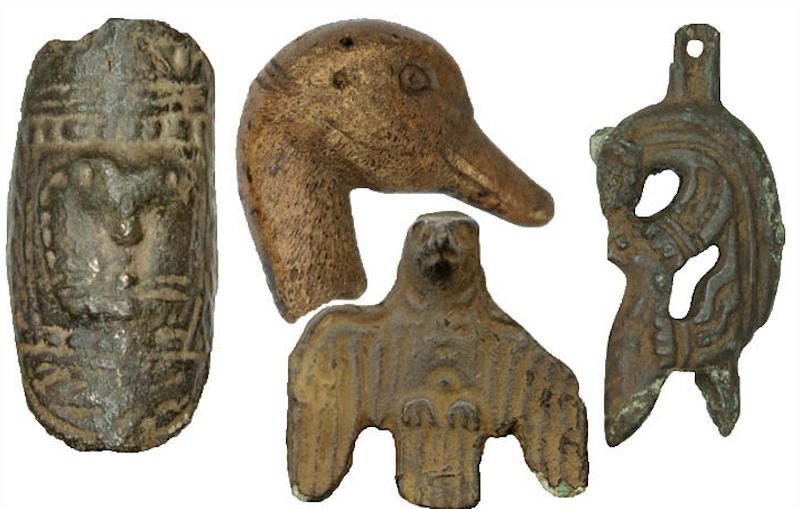
Excavations at Ust-Polui have uncovered more than 18,000 artifacts, including a rich variety of weapons and tools, such as bows and arrows, bone and metal knives, animal harnesses and sleds.
The archaeologists have also found hundreds of sophisticated art objects, including elaborate pottery jars, human and animal figurines and bronze jewelry in the shapes of animals. Researchers think the wealth of finds at Ust-Polui show it was a regional center for trade and the practice of sacred ceremonies.
Get the world’s most fascinating discoveries delivered straight to your inbox.
Tom Metcalfe is a freelance journalist and regular Live Science contributor who is based in London in the United Kingdom. Tom writes mainly about science, space, archaeology, the Earth and the oceans. He has also written for the BBC, NBC News, National Geographic, Scientific American, Air & Space, and many others.


